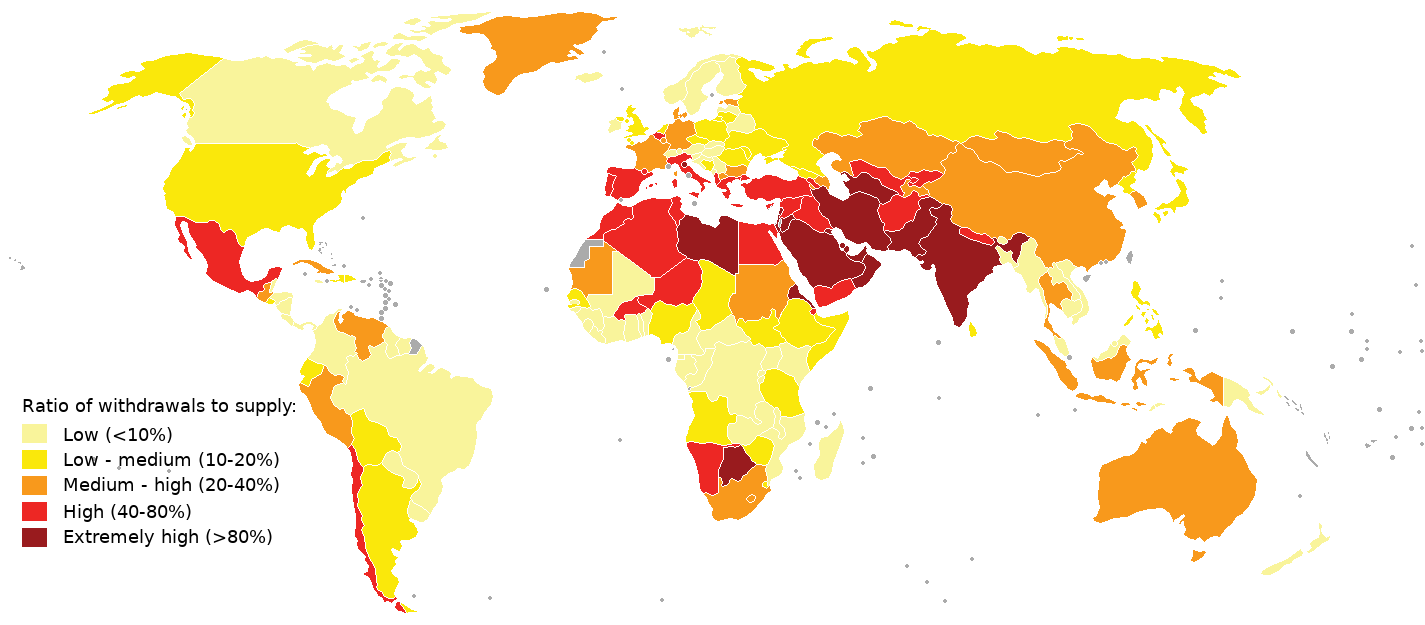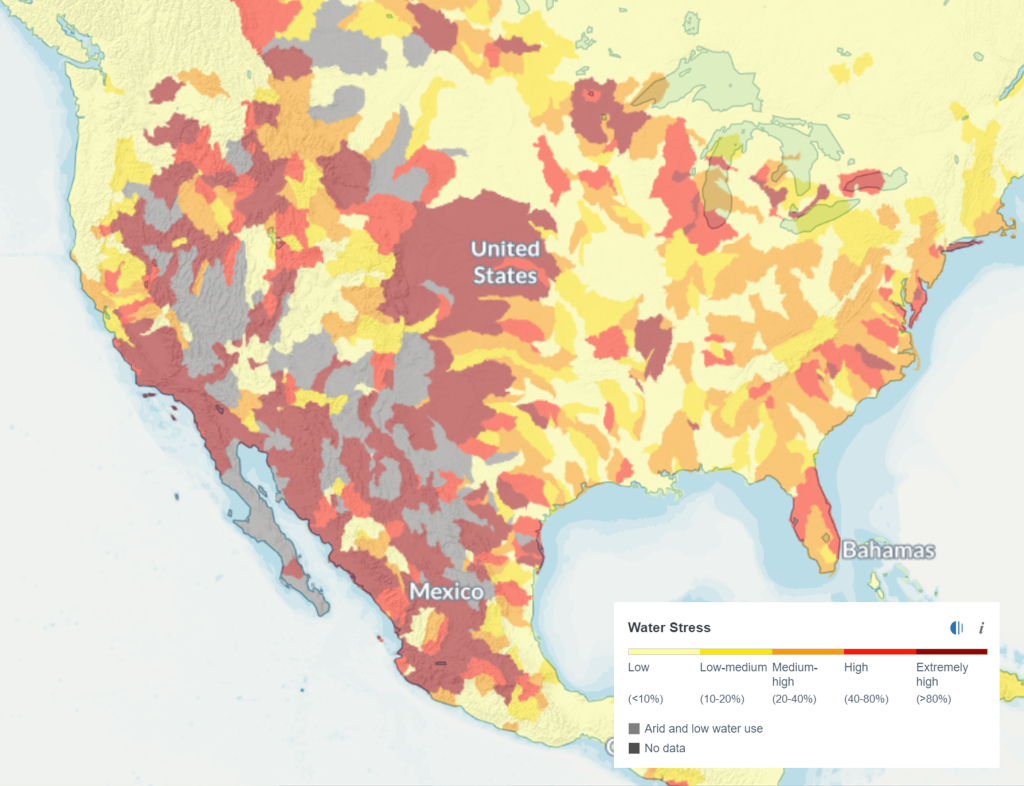1. Water Scarcity

While the United States is overall low to medium water stress (10-20%), there are large regions that are highly and extremely highly water stressed, ranging from 40% to over 80% in their ratio of withdrawals to supply (Figure 2C.1.2). These are mainly throughout the Colorado River Basin and the central and southern Great Plains, where there are major agricultural zones and minimal precipitation.

Two main factors drive water stress: increasing demand and decreasing water availability. Demand is accelerating as population increases and as increasing economic development drives a requirement for more resources. Climate change is making water unpredictable and creating increased shortages. As these factors continue, water stress is expected to become more severe.
The impacts of water stress are not distributed evenly across the planet. Many countries do not have adequate water sterilization systems or monitoring systems to manage water resources properly and ensure availability for all. Poor and marginalized groups are typically the first to feel the effects of water stress, as the ability to access clean water is often more difficult for these groups due to rising costs and lack of water infrastructure systems. This directly impacts the ability to maintain good health, protect families, or even earn a living. For women and girls in some areas of the world, water scarcity means a longer walk to collect fresh water, potentially putting them in unsafe conditions or precluding them from having time for work or education. Lack of easily accessible water can be particularly harmful for pregnant women and babies.
Check your understanding: water stress vs. water scarcity
References
Food and Agricultural Organization of the United Nations, (2020). The State of Food and Agriculture 2020. https://doi.org/10.4060/cb1447en
